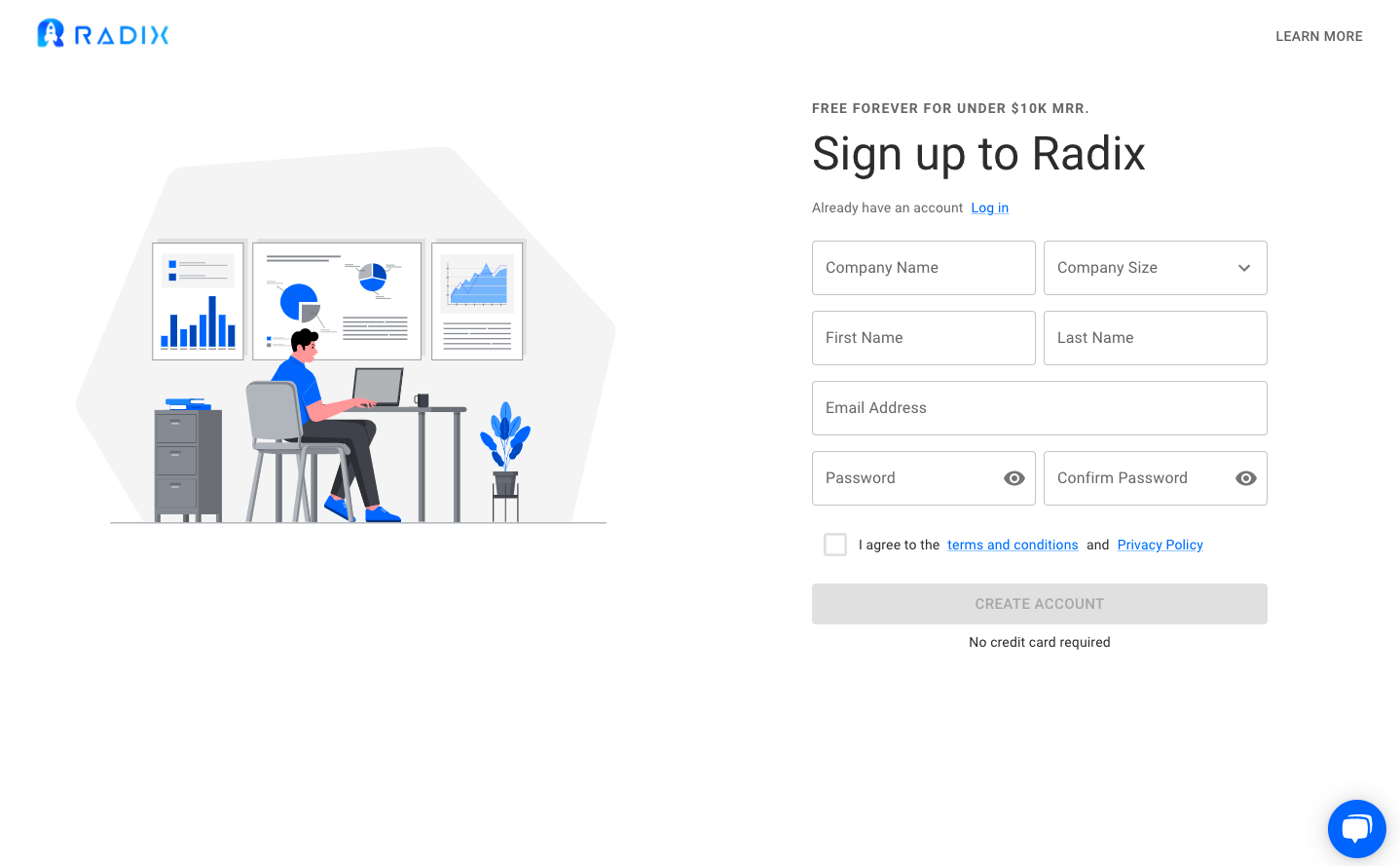SaaS localization is the process of modifying a product such that it seems natural to a user who not only speaks a different language but also lives in a different cultural circle.
In practice, this requires both translation and modifying the whole UX, which includes marketing, the buying process, visual design, and new features.
Ultimately, you want the target user to feel as though the product was conceived and developed with them in mind by someone from the same cultural background.
What is a SaaS Localization Strategy?
A localization strategy is a plan that outlines all of the adjustments to the product’s user interface that are required to meet language and cultural variations between the original and target markets.
The ultimate objective is to make the product seem familiar but not overly so. After all, you want your product to stand out in a competitive sector.
Product Internationalization vs. Product Localization
Both localization and internationalization are steps of the same process.
Product internationalization is a multi-step process that lays the groundwork for localization.
It entails conducting target market research, comprehending the target user, devising a market entrance plan, and equipping your company to operate beyond national boundaries.
Product localization, on the other hand, entails leveraging the information gathered through the internalization process to adapt your product (or generate new ones) to meet the demands of the local market.
What are the different kinds of SaaS localization?
The localization process may include a variety of subprocesses, depending on the product and its complexity.
Linguistic localization process
Linguistic localization is the process of translating your product copy into the target language.
It might be as easy as translating product documentation or user guides. However, SaaS localization frequently involves more extensive modifications to the UI to achieve the desired impact.
Price localization process
Price localization is quite simple to do, yet many SaaS businesses ignore it. This may have an adverse effect on customer acquisition or retention.
The simplest approach is to provide prices in multiple currencies based on the user’s browser language preferences or IP address.
Payment System Localization
Different payment methods are popular in different countries, therefore you may need to incorporate local payment providers into your product.
Cultural adaptation process
Cultural adaptation entails altering the product to better meet unique cultural standards.
Change date formats (mm-dd-yyyy to dd-mm-yyyy?) or UI color patterns, for example, because colors represent different things in different cultures.
This is perhaps the most difficult aspect of product localization since it requires a thorough understanding of the local culture. Even if the users speak the same language, cultural differences might be significant.
Software and hardware customization
The act of changing and refining your product to guarantee it operates effectively in the intended environment is known as software and hardware customization.
For example, if you’re selling an electrical item, you’ll need to modify the plugs to match the local sockets.
In the case of software, adjustments are frequently required to ensure compatibility with multiple devices or operating systems.
Why should you consider localizing your product?
Although English is the worldwide language of “the internet,” most users prefer websites and products in their native language.
That also applies to SaaS products. Product localization is essential if you are serious about entering new markets.
Here are a few of the reasons why.
SaaS localization improves customer experience
To begin, providing your product and assistance in the native language and adjusting it to the local reality results in a better customer experience.
If local customers can begin using the product efficiently right away, they will find its value more immediately, resulting in more product adoption.
We make the user feel special by giving a personalized product. This contributes to the development of trust and healthy long-term relationships.
SaaS Localization improves customer satisfaction
A successful customer experience leads to increased customer satisfaction.
You are more likely to match the demands of local customers if you customize the product for each target market.
If your customers are delighted with your product, the likelihood that they will upgrade to the premium version and suggest your software to others rises considerably.
SaaS localization gives you a competitive advantage
Solid localization may provide your SaaS a competitive advantage.
First, it presents a professional image and demonstrates that you are concerned about your consumers’ requirements and are devoted to meeting them.
Second, the effort involved in localization helps in the development of a deeper knowledge of the intended user group.
This enhances communication quality and allows you to reduce unneeded friction from the customer journey.
SaaS localization helps with market expansion
A smart localization plan will allow you to enhance your chances of entering a new market.
At the same time, it will help you in ensuring that the core of the product that first drew your original customer base is not jeopardized.
It’s pointless to consider expanding into new markets if you’re going to lose your existing customers.
Localization issues and pitfalls to avoid for SaaS products
What obstacles should you keep an eye out for while developing your localization strategy?
Let’s take a look at some of the more frequent ones.
Translations are only one aspect of localization
Localization entails much more than simply passing your material and elements of the UI via Google Translate.
You must ensure that the translations are of high quality, that you use the correct terminology, and that the tone is consistent throughout all elements of the UX.
Your best chance is to use the services of a professional translation company.
Problems with UI layout localization
The language and UI layout are strongly linked
Because the string length differs, just because English words fit on buttons or menus does not indicate that Swedish or Greek words would. Translation into some languages can increase string length by up to 300 %
Similarly, right-to-left scripts, such as Arabic, may not appear as beautiful as English when integrated into the same UI.
That is why, while developing your product’s user interface, you should consider your target audience and language.
Problems with image and video localization
Videos and photos are quite useful since they help customers rapidly understand your SaaS product, but you must ensure that they explain what you want to your target audience.
In other circumstances, such as with the UI, they may need to be redesigned, which might delay the localization process.
Release agility in software localization
If you want your product to be available to all users at the same time, your localization team must be able to keep up with new feature releases, no matter how frequent they are.
One method to simplify your operations and produce the proper quality on time is to use translation management software instead of manual translation.
Again, the earlier you begin localizing a product, the smoother and faster the process is, and the less rework is required to meet the new target market.
Workflow for marketing strategy localization
You require Market research to enhance your marketing plan localization workflow. This will demonstrate how effective the channels you are already using are in the new markets.
For example, it may turn out that the content channel in your sector is already saturated, making it extremely difficult to join the worldwide market.
Alternatively, there may be very little search volume for your specialized terms.
Content localization
A 1:1 translation of your material will not work. This is since such translation is unlikely to receive the same search traffic as the original content.
Instead, do keyword research in the local language to discover how search traffic differs between languages and local markets, and then leverage the findings to re-optimize your content.
Marketing assets for influencers
If influencers are an important part of your current marketing plan, you must account for a different reality in the target market.
To begin, ensure that such endorsements will be effective in the new market.
If this is the case, locate the ideal individuals to promote your product in front of the new audience.
These are the steps to implement a great SaaS Localization Plan
- First, execute market research
- Second, form a product localization team.
- Conduct ongoing customer discovery in the target market.
- Use necessary software with localization capabilities when available.
- You should implement Localization for each market based on the user journey.
- Put the product localization results to the test.
Conclusion
In conclusion, We’ve created a guide that you can use to figure out how to best localize your product. Without localization, you will be turning away large numbers of potential customers. As competition grows and the world becomes more connected and social, it’s important to explore every opportunity at your disposal. Localization is one of these opportunities for software companies, so do it right and reap the rewards.
Radix helps you do business more intelligently by providing a beautiful interface on top of data that other software providers keep hidden. Your SaaS is likely growing as fast as your business, and it’s important to track every relevant bit of information that can help you ride the wave. Radix can help you do just that, and it’s a glorious addition to any company looking to stay competitive in today’s markets.

Read More:
Building SaaS Community | Some of the Greatest Benefits
How to Grow a Cool SaaS Business
SaaS Metrics: What Are The Top 5 VCs Look At For Series A/B/C?





